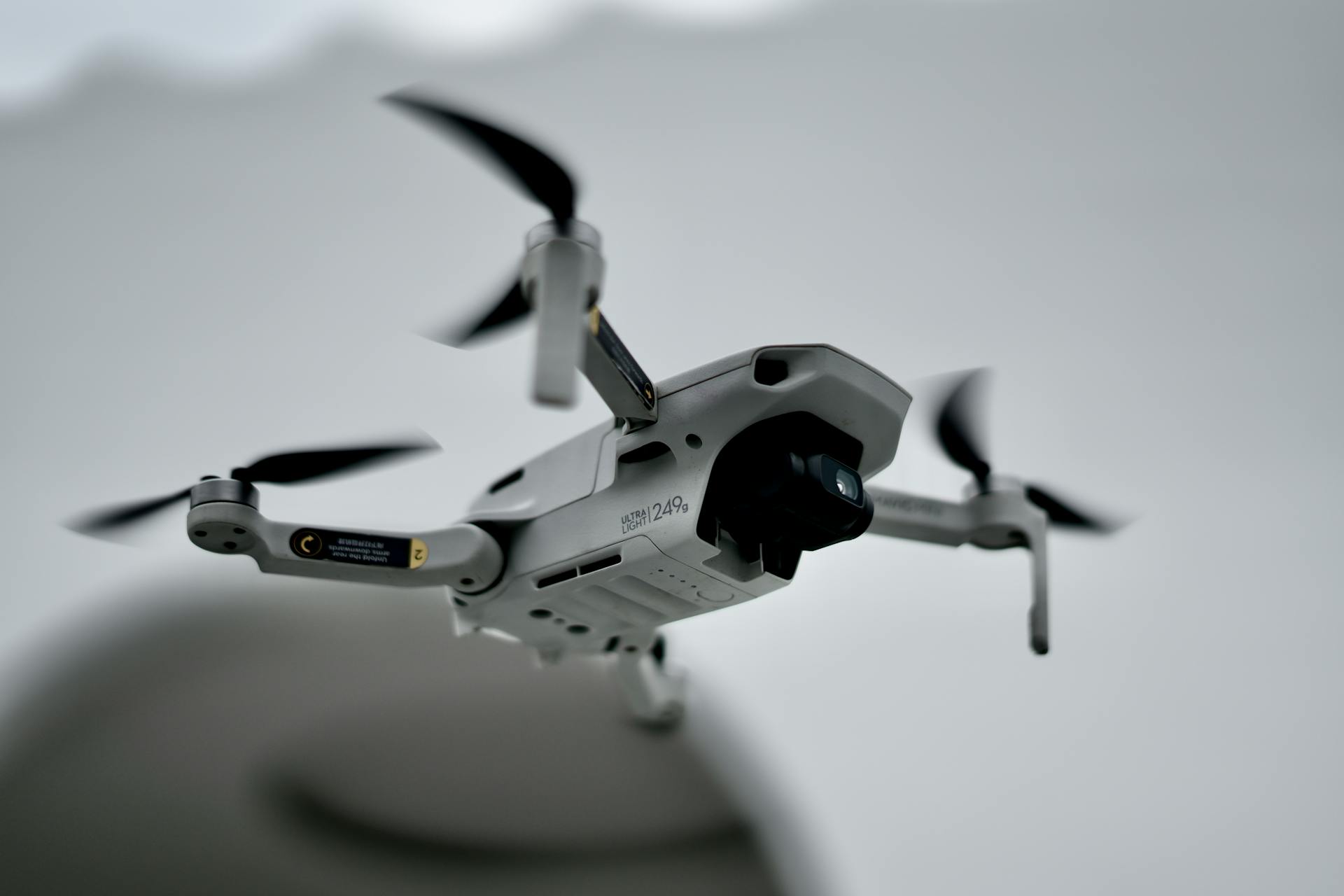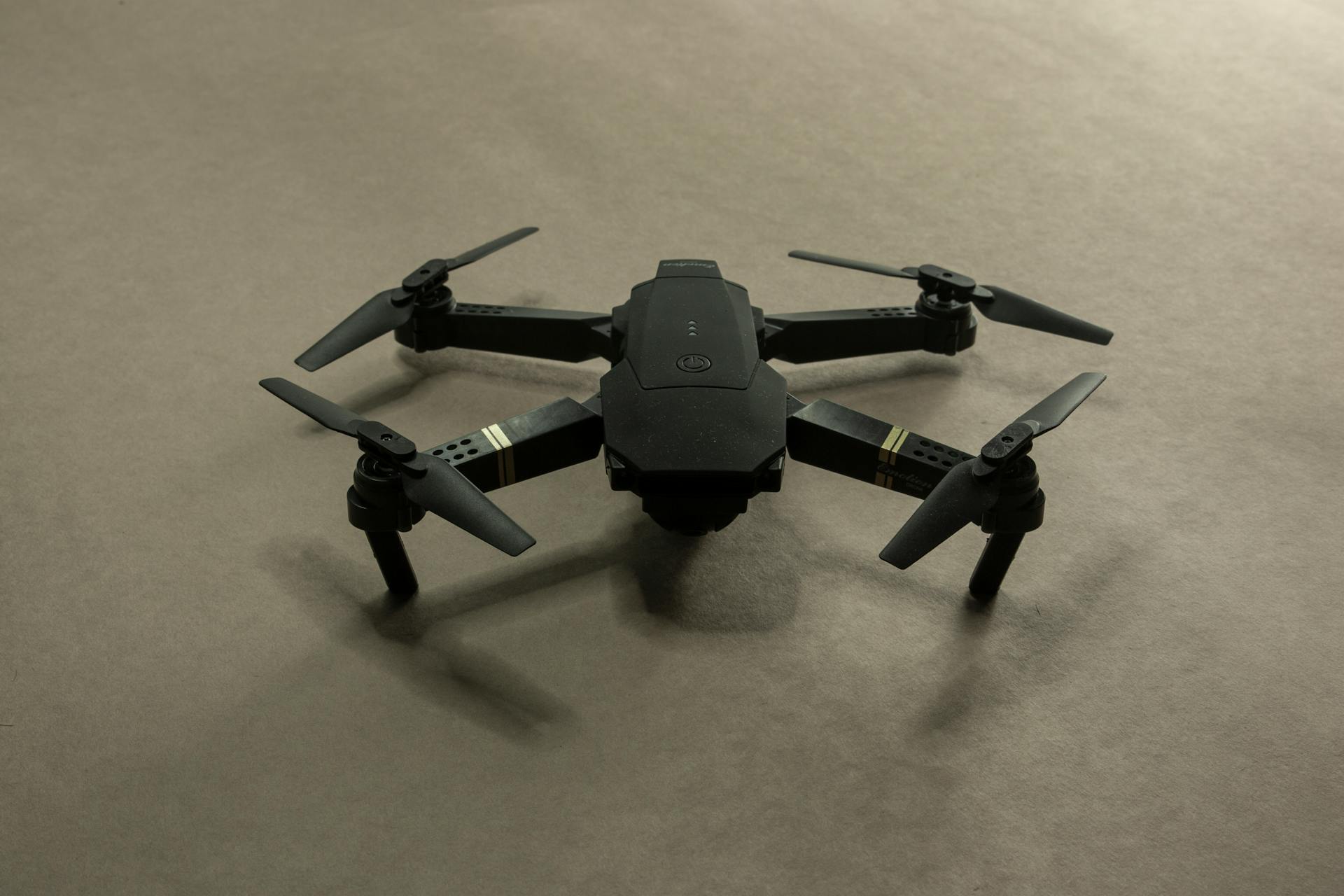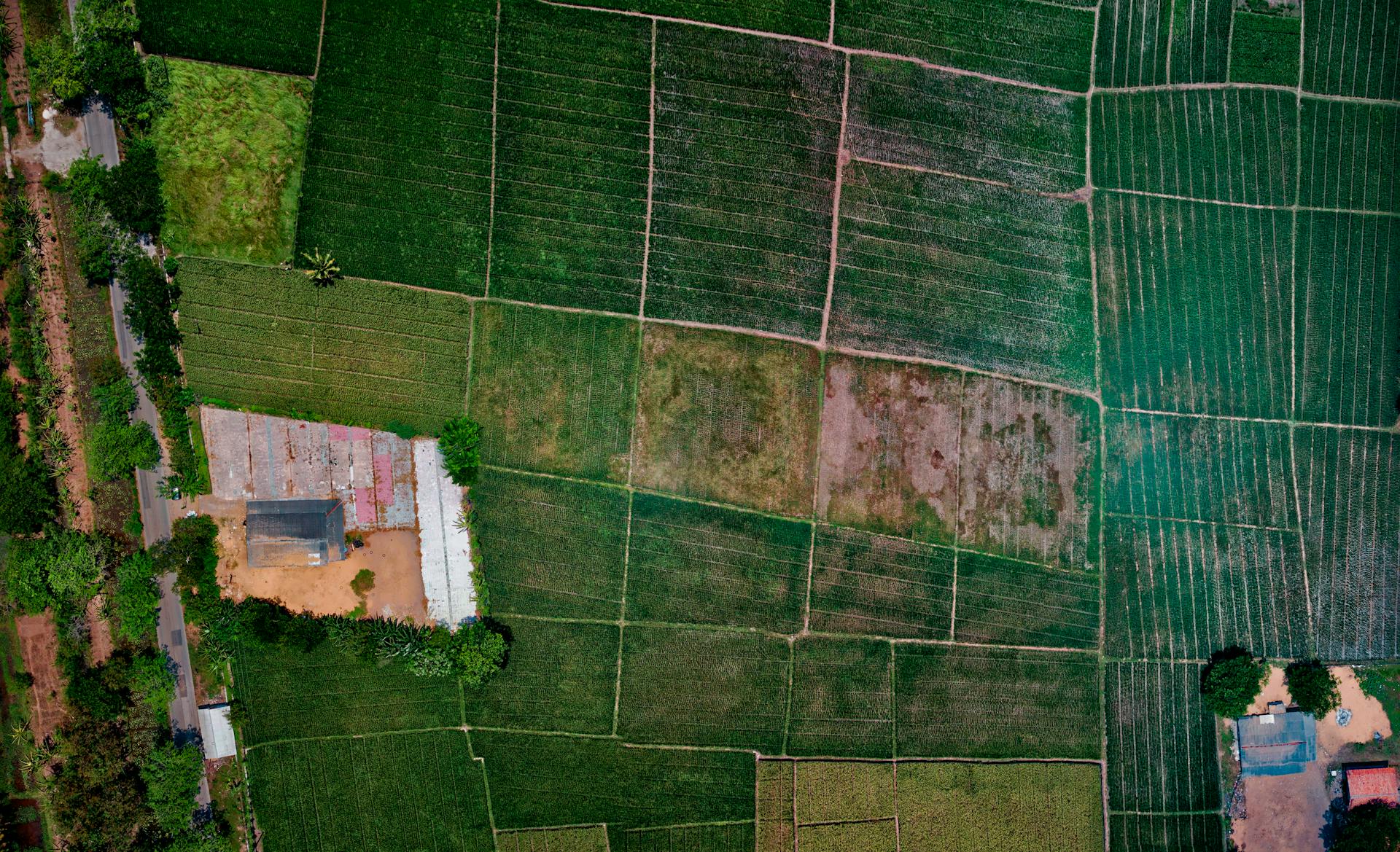
Spy drones have become an essential tool for military forces around the world, offering unparalleled surveillance and reconnaissance capabilities. They can be equipped with a range of sensors and cameras to gather intelligence on enemy positions and movements.
Some spy drones are designed for high-altitude surveillance, capable of flying up to 65,000 feet and staying aloft for over 24 hours. This allows them to gather information on a large scale and provide real-time updates to military commanders.
The US military is a major user of spy drones, with the MQ-9 Reaper being one of the most advanced models in operation. This drone has a wingspan of over 66 feet and can carry a payload of up to 4,000 pounds.
The use of spy drones has significantly reduced the risk of loss of life for military personnel, as they can gather intelligence from a safe distance.
Technical Details
The Black Hornet is a small and lightweight drone, measuring around 16 × 2.5 cm (6 × 1 in) and weighing 18 g (0.7 oz) with its battery.
It's small enough to fit in one hand, making it easy to transport and deploy in the field.
The drone has a top speed of 21 km/h (13 mph) and can reach a 90% charge in 20-25 minutes, which is the same time it takes to hover.
An operator can be trained to operate the Black Hornet in just 20 minutes, making it a quick and easy system to learn.
X80
The X80 model is quite impressive with its EO stabilized camera that captures high-resolution (HD) visual images.
This camera has an 80x visual zoom, allowing users to get a closer look at objects from a distance.
Object tracking and recognition capabilities are also built-in, making it easier to identify and follow targets.
Additionally, the X80 features geolocation capabilities, giving users a sense of where the camera is pointed in the world.
Readers also liked: Military Drone with Camera
Roles and Distinctions
Military drones are used for Intelligence, Surveillance, and Reconnaissance (ISR) operations, gathering imagery intelligence without risking lives. This has been the case since the late 1950s.
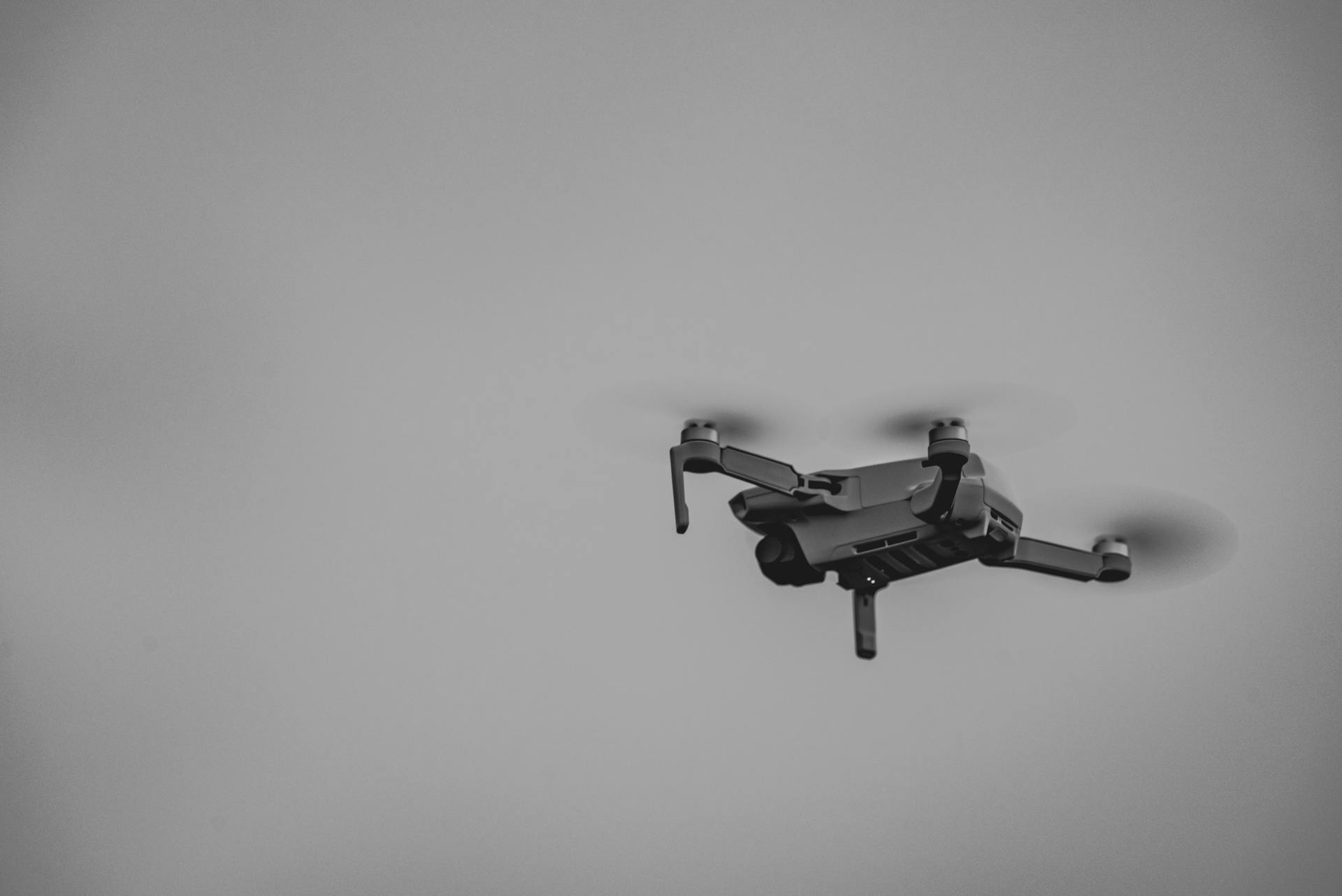
ISR is essential for military operations, and it entails the collection, analysis, and interpretation of information for informed decision making and strategic advantage. It's enriched by sources like human intelligence (HUMINT), signal intelligence (SIGINT), and satellites.
ISR has three main components: Intelligence, Surveillance, and Reconnaissance. Intelligence is the end product of ISR, while Surveillance is the continuous observation of enemy activity or specific targets in the battlespace. Reconnaissance involves gathering information to address specific military objectives and inquiries.
The difference between ISR and ISTAR lies in the action of target acquisition, which provides critical target information to neutralize, destroy, or stop threats.
Here's a breakdown of the roles and distinctions:
Tactical drones, a type of military surveillance drone, are highly effective for ISR or ISTAR operations, thanks to their remote detection capabilities, infrared cameras, and optical zoom capabilities. They can also carry variable electromagnetic payloads to detect telecommunications activity.
Operational History and Users
The PD-100 Black Hornet has seen extensive use in various military operations. It was deployed with soldiers from the UK's Brigade Reconnaissance Force at Camp Bastion in Afghanistan, where it was used to gather intel on enemy positions.
The Black Hornet's capabilities make it an ideal tool for reconnaissance missions. It can fly for 20 minutes on quiet electric motors and is equipped with a digital data link and GPS, allowing operators to control the UAV remotely.
One notable deployment was with US Marine Corps special operations teams in 2015. The individually handmade Black Hornet was seen as too expensive for large-scale deployment, with a unit costing as much as US$195,000.
The Black Hornet has been used by militaries of 19 NATO-allied countries, including the UK, US, Australia, France, and Germany.
If this caught your attention, see: How Are Drones Used for Agricultural Purposes
Martlet MI-3
The Martlet MI-3 is a military-grade multirotor that offers the most payload capacity and flight time.
Its portability and reliability make it a valuable asset for users in the field.
The MI-3 is designed to provide unmatched performance, which is a testament to its field-proven capabilities.
Its autonomous features allow for hands-off operation, giving users more flexibility and control.
Nighthawk 2-Uz
The Nighthawk 2-UZ is a versatile tool with a high-resolution (HD) thermal image capability.
Its EO/IR stabilized camera allows for clear images even in unstable environments.
This device also boasts 40x visual zoom, giving users a closer look at their surroundings.
Object tracking, recognition, and geolocation capabilities make it an invaluable asset for various operations.
Falconeye 2
The Falconeye 2 is a versatile imaging system that has been utilized by various users. It features a high-resolution thermal image, allowing for clear visual identification in low-light environments.
This EO/IR stabilized camera is designed to provide a stable image, even in the most turbulent conditions. The Falconeye 2's 40x visual zoom capability enables users to gather detailed information from a distance.
Object tracking and recognition capabilities make it an invaluable tool for surveillance and reconnaissance missions. The system's geolocation features further enhance its utility, providing users with precise coordinates of targets or areas of interest.
Operational History
The Black Hornet's operational history is a fascinating story of innovation and deployment. It was used by soldiers from the UK's Brigade Reconnaissance Force at Camp Bastion in Afghanistan.
The aircraft was deployed from the front line to fly into enemy territory to take video and still images before returning to the operator. This was done as part of Operation Herrick in Afghanistan.
The Black Hornet was designed to blend in with its surroundings, flying for 20 minutes on quiet electric motors. It was launched from a small box that could be strapped to a utility belt.
In 2014, the United States Army Natick Soldier Research, Development and Engineering Center (NSRDEC) selected the PD-100 Black Hornet for the Cargo Pocket Intelligence, Surveillance, and Reconnaissance (CP-ISR) program. Further refinements were needed for a U.S. Army role.
By 2015, the Black Hornet had deployed with U.S. Marine Corps special operations teams. The individually handmade Black Hornet was seen as too expensive for large-scale deployment.
In 2018, the US Army bought 60 Hornet 3 drones, and in 2022, they purchased another 300. The Black Hornet was used to identify hidden dangers and enemy positions, helping to keep soldiers safe.
Discover more: Black Hawk Drone Military
Users
The PD-100 Black Hornet has been adopted by a significant number of militaries around the world. By September 2016, it was in use by the militaries of 19 NATO-allied countries.
The list of countries that have adopted the PD-100 Black Hornet is impressive, and includes some of the world's most advanced militaries. These countries include Algeria, Australia, Denmark, France, Germany, Greece, India, Indonesia, Malaysia, Netherlands, New Zealand, Norway, Poland, South Africa, Spain, Switzerland, Turkey, Ukraine, and the United Kingdom.
Some of the specific military units that have used the PD-100 Black Hornet include the 104th Operational Maneuvers Regiment in Algeria, the Australian Army, the Danish Armed Forces, the French Special Operations Command, the German Army, the Hellenic Army in Greece, the National Security Guard in India, and the 21 Grup Gerak Khas of the Malaysian Army.
Here is a list of some of the countries and military units that have adopted the PD-100 Black Hornet:
- Algeria: 104th Operational Maneuvers Regiment
- Australia: Australian Army
- Denmark: Danish Armed Forces
- France: French Armed Forces (including the Special Operations Command)
- Germany: German Army
- Greece: Hellenic Army
- India: National Security Guard
- Indonesia: Indonesian Army
- Malaysia: 21 Grup Gerak Khas of Malaysian Army
- Netherlands: Dutch Army
- New Zealand: New Zealand Special Air Service
- Norway: Norwegian Armed Forces
- Poland: Polish Armed Forces
- South Africa: South African Police Service
- Spain: Spanish Armed Forces
- Switzerland: Swiss Army (19)
- Turkey: Turkish Land Forces, Special Forces Command (Turkey) & Gendarmerie General Command
- Ukraine
- United Kingdom: British Army, retired in 2016 after Operation Herrick. Reintroduced through the Defence Equipment and Support programme in April 2019 for research and development into a capability gap identified by British Army HQ for brigade-level unmanned reconnaissance.
- United States: United States Marine Corps, Lee County Sheriff's Office, United States Army Cavalry Scouts
Border Patrol Basics
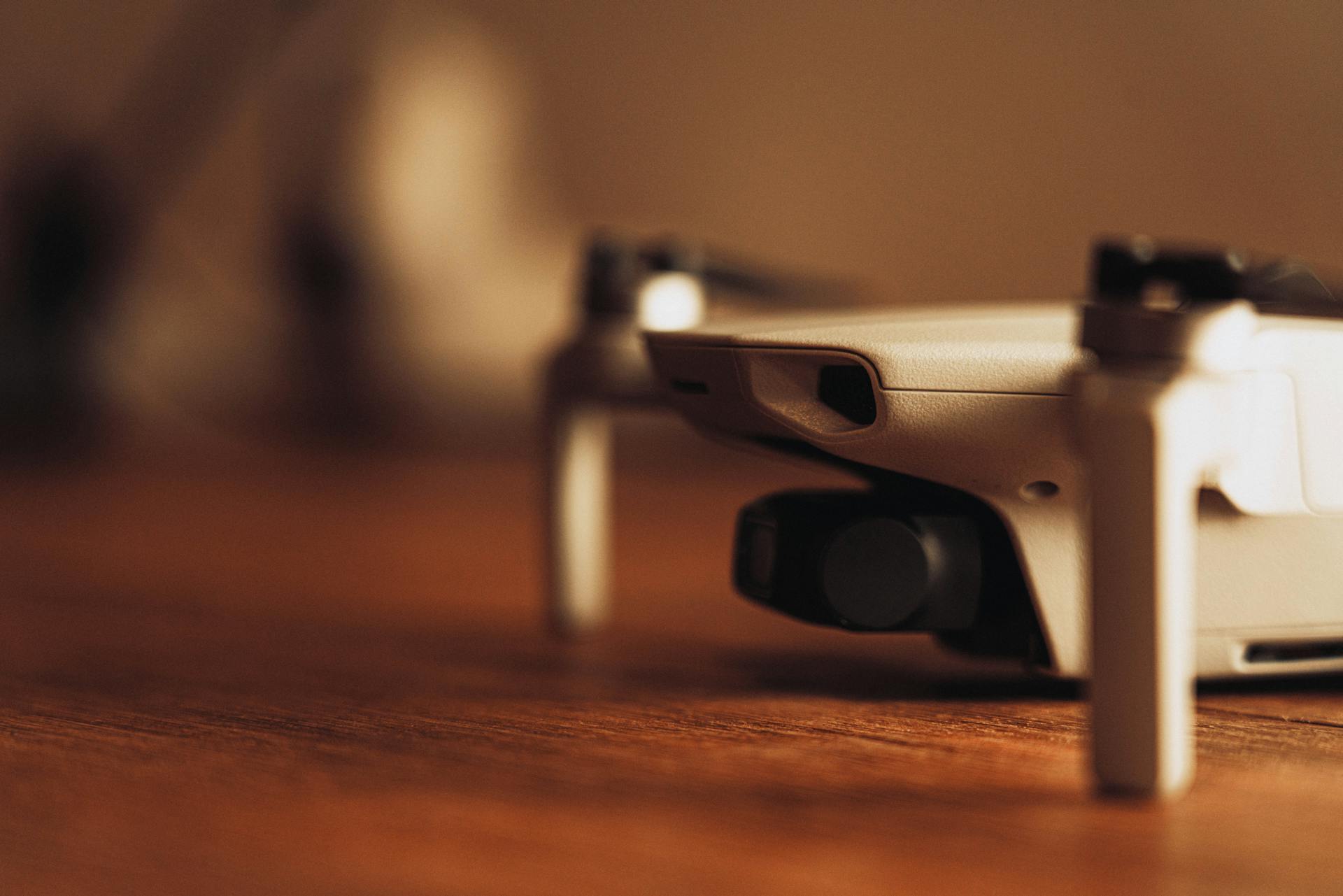
Border patrol drones have become a crucial tool for monitoring and securing critical areas such as borders and hostile environments.
The primary goal of border patrol drones is to monitor and secure critical areas. This includes borders and hostile environments, both on land and at sea.
Drones are ideal for border surveillance because they can be deployed quickly and conveniently.
Frequently Asked Questions
How much is a military spy drone?
Military spy drones can cost anywhere from $700,000 to over $70 million, depending on the model and features. Prices for these advanced drones vary widely, but all are considered safe and reliable options.
How high can a spy drone fly?
Spy drones can reach altitudes of up to 60,000 feet or more, enabling them to conduct high-stakes surveillance and reconnaissance missions.
Sources
- https://en.wikipedia.org/wiki/Teledyne_FLIR_Black_Hornet_Nano
- https://www.popsci.com/technology/black-hornet-drone/
- https://heighttechnologies.com/military-istar-drones/
- https://elistair.com/military-surveillance-drones/
- https://nationalinterest.org/blog/buzz/xrq-73-shepard-mad-scientists-darpa-built-new-stealth-spy-drone-211625
Featured Images: pexels.com
